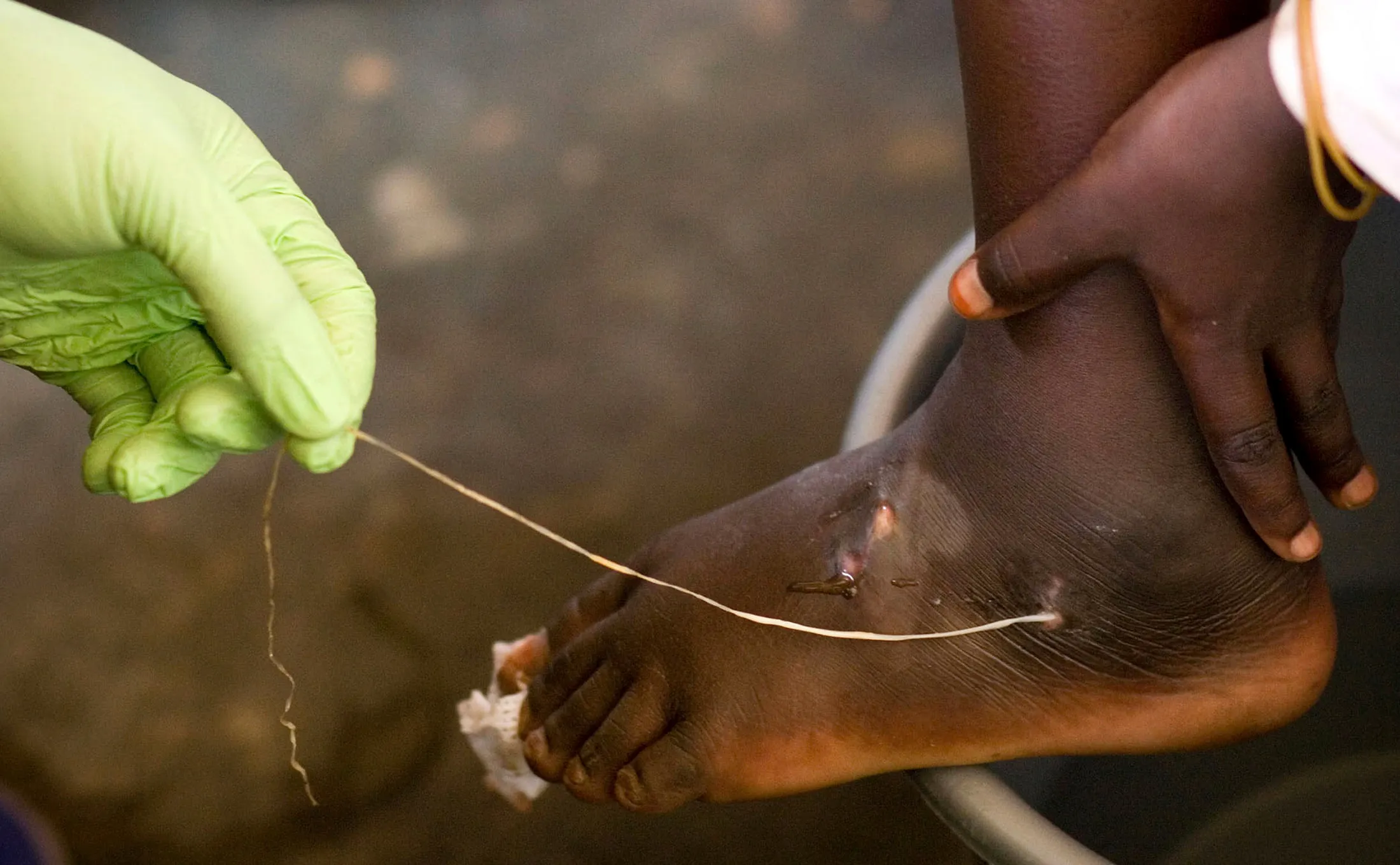Guinea worm disease is caused by a parasite called Dracunculus medinensis. People usually get infected by drinking unsafe water that contains tiny water fleas carrying the larvae of the worm.
If you suspect you might have Guinea worm, you can get personalised guidance from a licensed doctor through Hope Plus. They can explain how to manage the infection safely, prevent complications, and protect others in your household.
Symptoms You Might Notice
- You may feel the worm moving under your skin, often in the legs or feet.
- A blister may form where the worm emerges, which can be painful, red, and tender.
- Before the blister appears, you may experience fever, nausea, vomiting, diarrhoea, or skin rashes.
- If the wound becomes infected, complications such as cellulitis, joint infections, or tetanus can occur.
How It Is Diagnosed
- The most obvious sign is seeing or feeling the adult worm under the skin.
- In some cases, an X-ray may be used to check for calcified worms.
Treatment Options
- There is no medicine that kills the Guinea worm, but the worm can be carefully removed. A small stick is slowly used to wrap the worm over several days to extract it without breaking it.
- Keep the wound covered to prevent the worm from contaminating water sources.
- Pain relief is given to manage discomfort.
- If the wound gets infected, antibiotics such as Amoxicillin or Cloxacillin may be prescribed under a doctor’s supervision.
How to Protect Yourself
- Always filter or boil drinking water before consuming.
- People infected with Guinea worm should avoid all contact with drinking water sources to stop spreading the infection.
- Educating communities about safe water and hygiene is key to preventing the disease.


